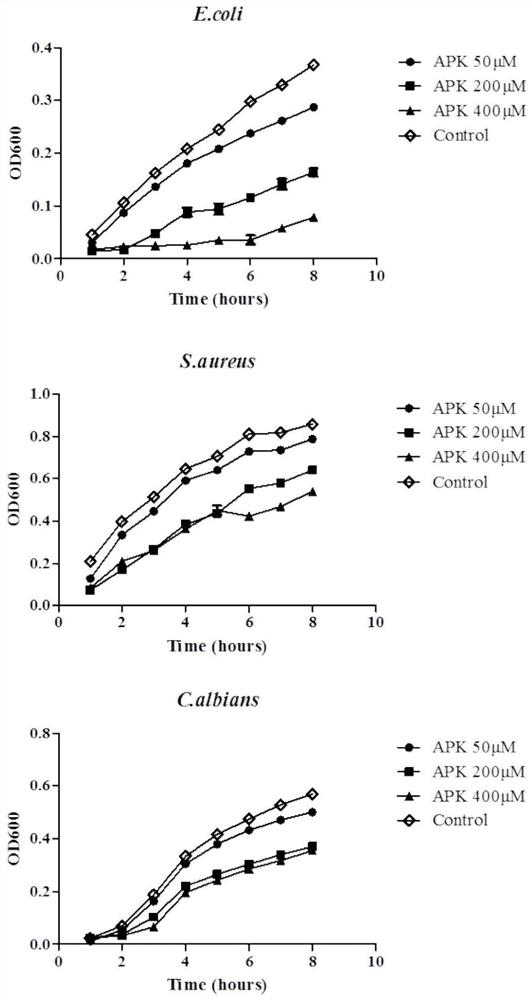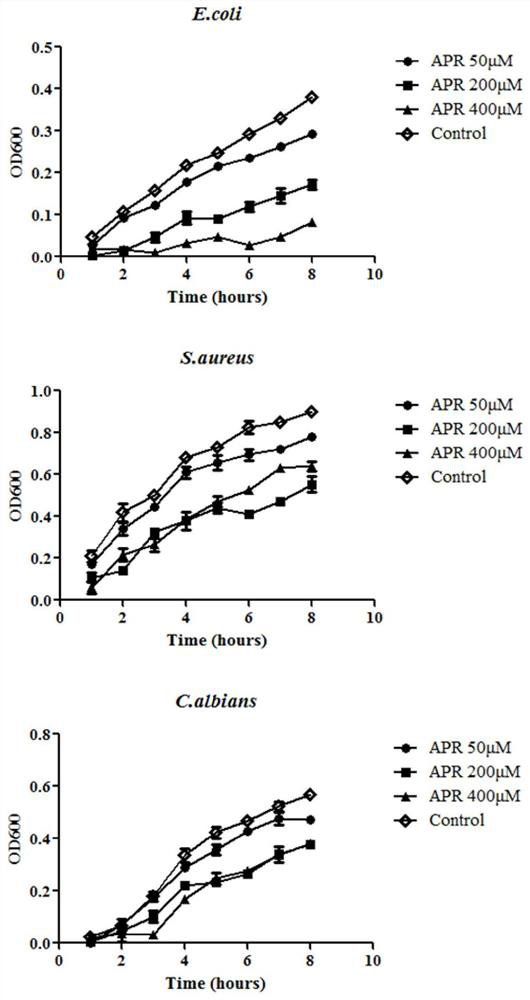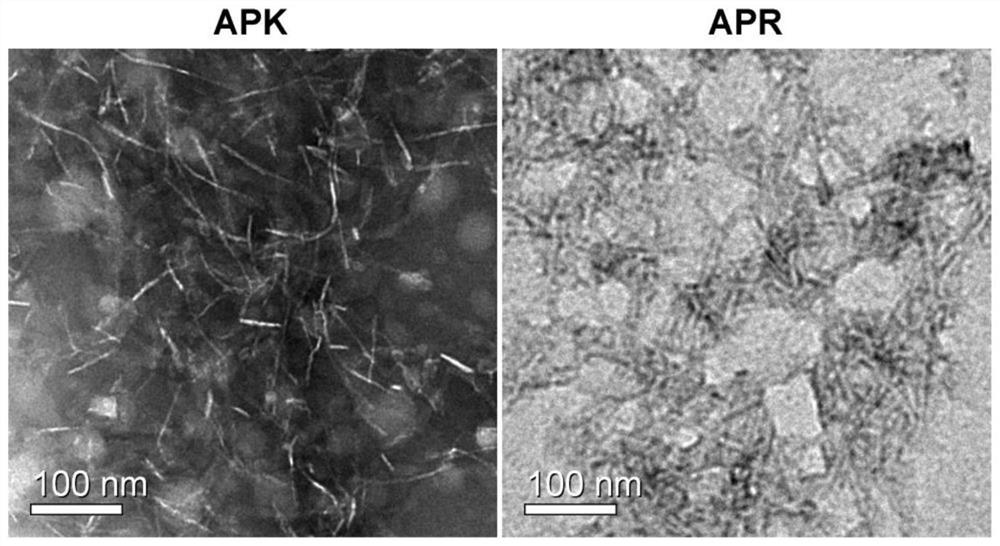A Novel Antimicrobial Peptide and Its Application
A technology of antibacterial peptides and antibacterial ingredients, applied in the application, antibacterial, antifungal and other directions, can solve the problems of high toxicity, poor stability, low antibacterial activity, etc., and achieve strong antibacterial properties and good stability.
- Summary
- Abstract
- Description
- Claims
- Application Information
AI Technical Summary
Problems solved by technology
Method used
Image
Examples
Embodiment 1
[0045] Example 1: Antibacterial peptides inhibit the growth of different microorganisms
[0046] Material of the present invention: Ac-Ala-Ala-Ala-Ala-Ala-Ala-Pro-Lys-Lys-Pro-Ala-Ala-Ala-Ala-Ala-Ala-NH 2 (SEQ ID NO.1), abbreviated as APK, was entrusted to Shanghai Botai Biotechnology Co., Ltd. for chemical synthesis. Among them, N-terminal acetylation (adding acetyl Ac) and C-terminal amidation (adding amino NH) 2 ) is also known as the blocking of the peptide end, which can shield the dissociable groups at the two free ends of the polypeptide and increase its end hydrophobicity.
[0047] A single clone of Escherichia coli (E.coli, LB medium), Staphylococcus aureus (S.aureus, LB medium), and Candida albicans (C.albicans, YPD medium) was cultured at 37°C and 180rpm overnight. Then 7100rpm, 2min centrifugation to collect bacterial cells, dilute E.coli and S.aureus to OD600 of 0.4 and C.albicans to 0.8, and then inoculate the bacterial solution on a 96-well plate at 5% per well...
Embodiment 2
[0050] Example 2: Antibacterial peptides inhibit the growth of different microorganisms
[0051] Material of the present invention: Ac-Ala-Ala-Ala-Ala-Ala-Ala-Pro-Arg-Arg-Pro-Ala-Ala-Ala-Ala-Ala-Ala-NH 2(SEQ ID NO.2), Ac represents acetyl group, abbreviated as APR; and entrusted Shanghai Botai Biotechnology Co., Ltd. to carry out chemical synthesis.
[0052] A single clone of Escherichia coli (E.coli, LB medium), Staphylococcus aureus (S.aureus, LB medium), and Candida albicans (C.albicans, YPD medium) was picked and cultured at 37°C and 180rpm overnight. Then 7100rpm, 2min centrifugation to collect the bacteria, dilute E.coli and S.aureus to OD600 of 0.4 and C.albicans to 0.8, and then inoculate the bacteria solution on a 96-well plate at 5% per well containing 0, 50 μM, 200 μM and 400 μM APK were cultured in 100 μL medium at 37°C and 70 rpm, and the OD600 was measured with a microplate reader at different time points, and the growth curve was drawn.
[0053] from figure ...
Embodiment 3
[0055] Example 3: Antibacterial peptides self-assemble to form nanofibers
[0056] Materials: APK and APR short peptides were entrusted to Shanghai Botai Biotechnology Co., Ltd. for chemical synthesis.
[0057] The APK and APR short peptides were dissolved in deionized water to prepare a 1 mM solution. 10 μL of the short peptide solution was taken and dropped on a 400-mesh copper mesh for 5 min, and then the liquid was removed with filter paper. Then stain with 10 μL of 2% phosphotungstic acid for 2 min, absorb the liquid with filter paper and air dry naturally. The nanostructures formed by the self-assembly of APK and APR were observed by TEM.
[0058] from image 3 It can be seen that both APK and APR self-assemble in solution to form nanofibers.
[0059] The results of Example 3 show that the nanofibers formed by the self-assembly of APK and APR may be the main structure that encapsulates microorganisms and inhibits their growth and proliferation.
PUM
 Login to View More
Login to View More Abstract
Description
Claims
Application Information
 Login to View More
Login to View More - R&D Engineer
- R&D Manager
- IP Professional
- Industry Leading Data Capabilities
- Powerful AI technology
- Patent DNA Extraction
Browse by: Latest US Patents, China's latest patents, Technical Efficacy Thesaurus, Application Domain, Technology Topic, Popular Technical Reports.
© 2024 PatSnap. All rights reserved.Legal|Privacy policy|Modern Slavery Act Transparency Statement|Sitemap|About US| Contact US: help@patsnap.com










